Summary
This project aims to develop deep generative models, an emerging topic in AI, for radio frequency (RF) waveforms collected from real-world communications hardware. This research will lead to cheaper, more realistic synthetic waveform generation for testing, modeling, and data sharing.
Description
After initial investigations with simulated datasets, we plan to develop generative models using real datasets. Potential applications of this work include generation of waveforms for interference testing, characterization of closed-box communication systems, and signal obfuscation for data sharing.
Objectives:
- Develop general-purpose deep generative models, e.g., generative adversarial networks (GANs), for modern radio frequency (RF) communication waveforms (e.g., LTE, Wi-Fi) and demonstrate their utility for laboratory-based interference testing.
- Collect and publish RF datasets of communication waveforms for model development.
- Investigate generative models for data obfuscation to facilitate data sharing.
Major Accomplishments
Completed:
- RF dataset collections.
- Generative model development with simulated data.
- Generative model development for real RF data.
- Early-stage research into population obfuscation.
In Progress:
- Experimental assessment of efficacy of GAN-generated waveforms for laboratory-based interference testing.
- Development and refinements of novel evaluation methodologies for generative models of RF waveforms.
Preliminary Results:
I/Q data segments of duration 17.07 ms, 30.72 MS/s sampling rate, visualized as 1024 x 1024 spectrograms
Target Distribution Examples: Field captures of AWS-1 Band Uplink LTE (see NTIA Technical Report TR-21-553)
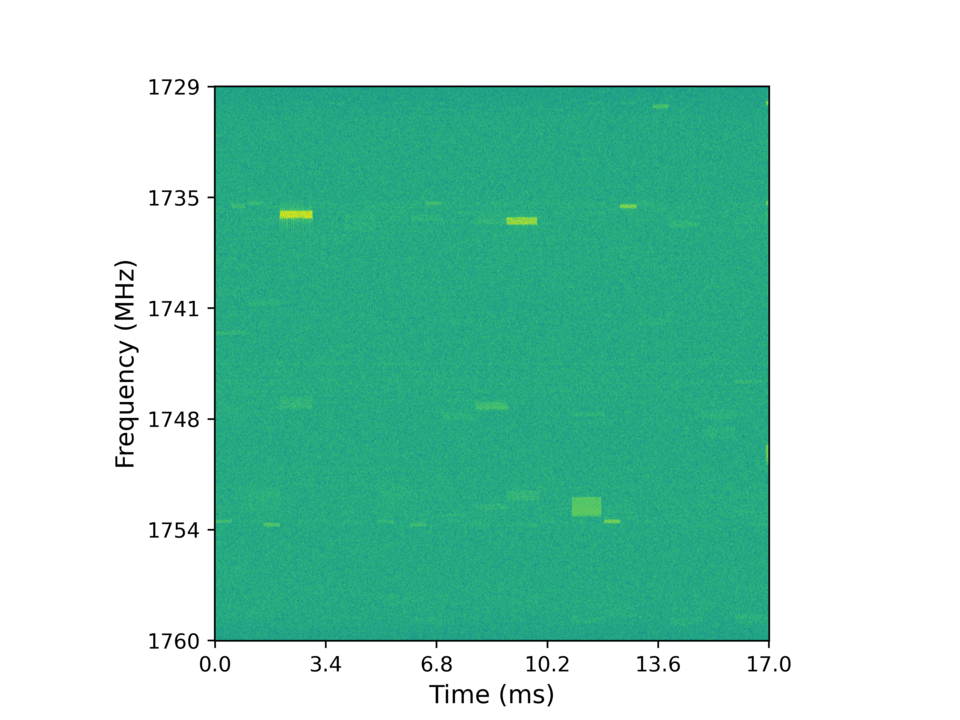
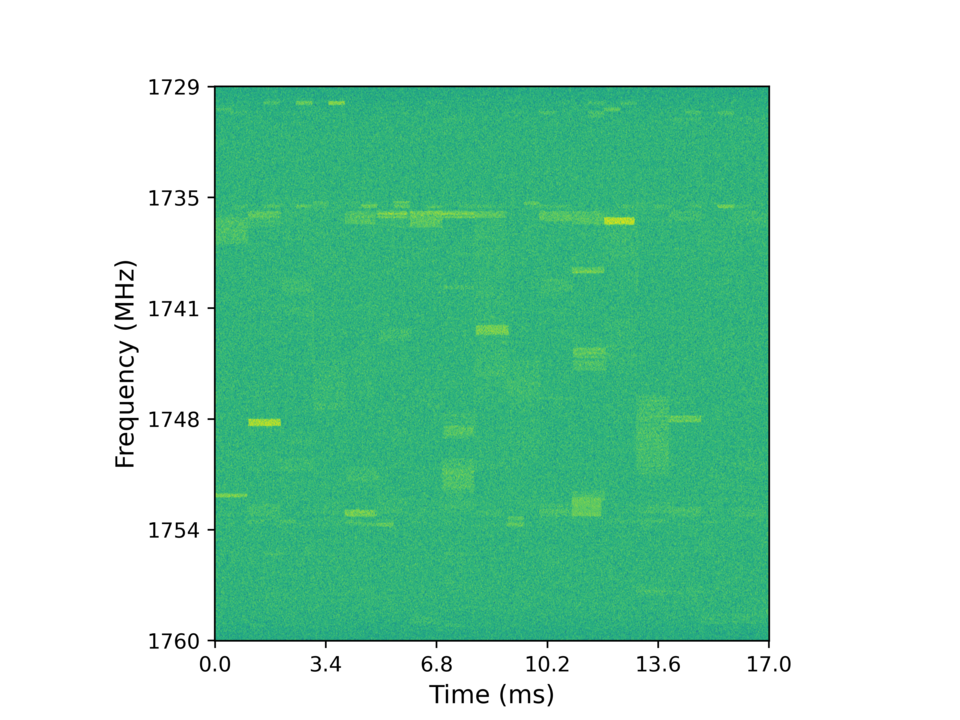
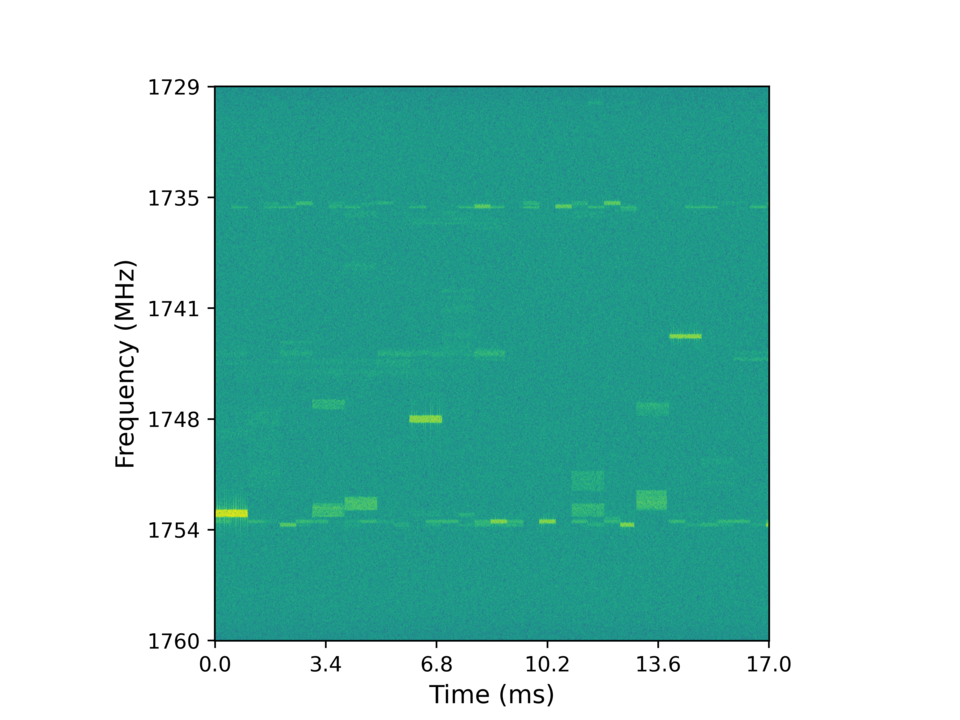
Generated Examples:
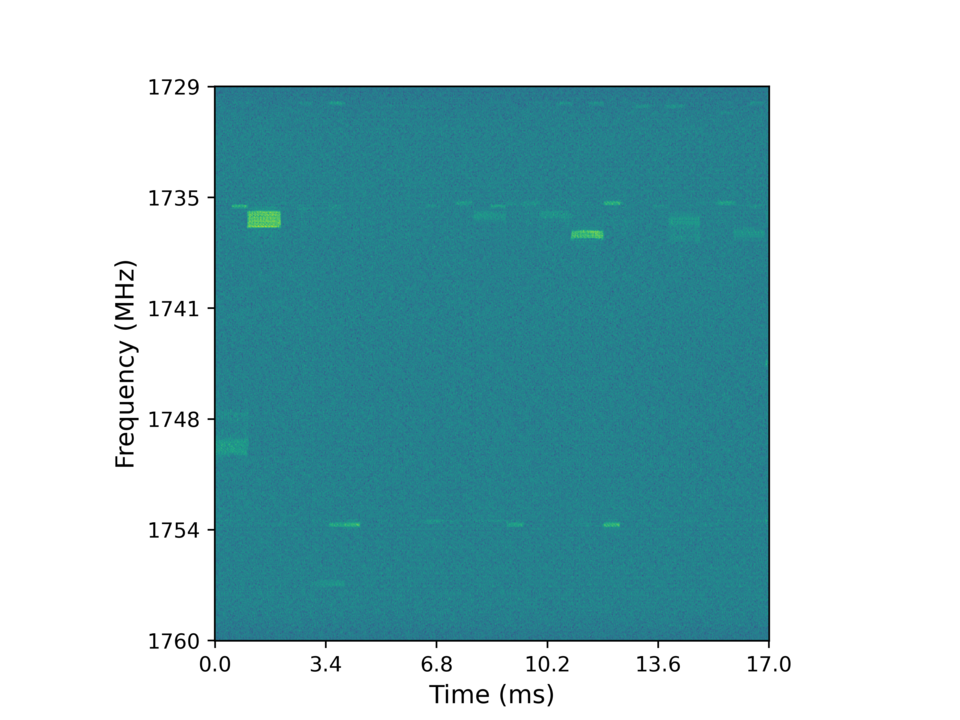
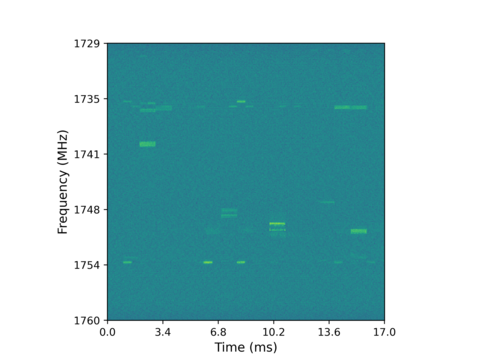
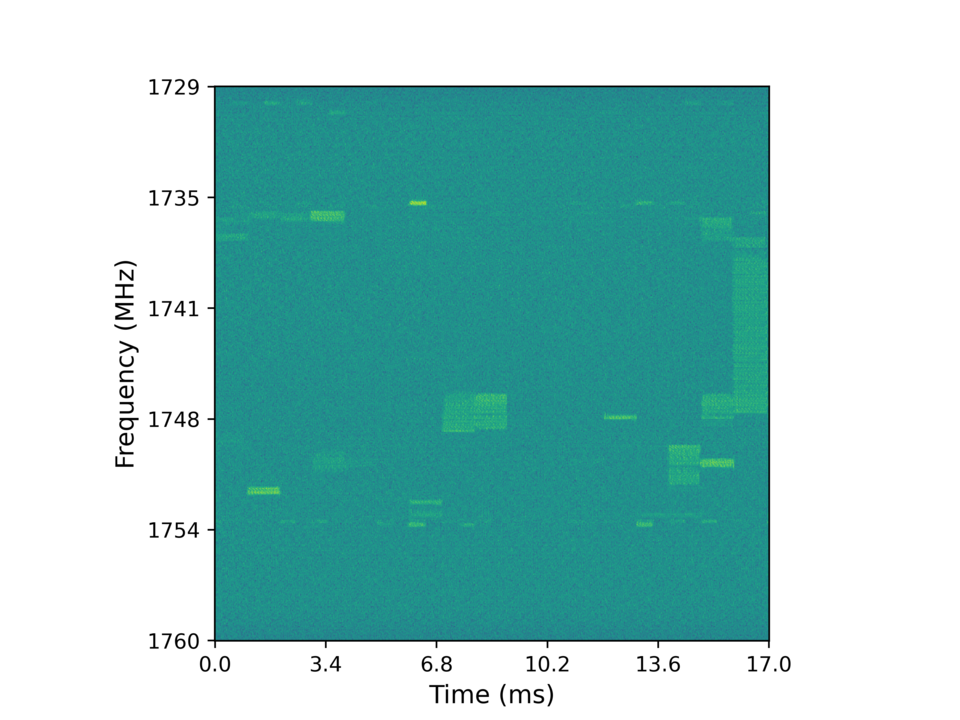
Follow-on Research: Adaptive Closed-Box Interference Susceptibility Testing
- Aim: Leverage machine learning for adaptive testing of closed-box commercial off-the-shelf (COTS) communication systems under dynamic conditions.
Publications:
- A. Wunderlich, J. Sklar, "Data-Driven Modeling of Noise Time Series with Convolutional Generative Adversarial Networks", Machine Learning: Science and Technology, vol. 4, no. 3, Sept 2023. https://doi.org/10.1088/2632-2153/acee44
- J. Sklar, A. Wunderlich, “Feasibility of modeling orthogonal frequency-division multiplexing communication signals with unsupervised generative adversarial networks,” Journal of Research of National Institute of Standards and Technology Vol. 126, No. 126046, 2021. https://doi.org/10.6028/jres.126.046
- S. Tschimben, S. Subray, A. Sanders, A. Wunderlich, “Collection methods for Wi-Fi and Bluetooth I/Q recordings in the 2.4 GHz and 5 GHz bands with low-cost software defined radios,” NIST Technical Note 2237, Sept 2022. https://doi.org/10.6028/NIST.TN.2237
- M. Frey, A. Wunderlich, R. Hoover, K. Caudle, L. Koepke, D. Newton, “Population Obfuscation: A Masking Problem and Some Solutions,” Proceedings Joint Statistical Meetings (JSM), 2022. Link.
- M. Forsyth, D. Kuester, J. Sklar, A. Wunderlich, A. Sanders, “Recording LTE user equipment emissions as a function of resource block,” NIST Technical Note, in preparation.
Software:
- A. Wunderlich, J. Sklar, “NoiseGAN: Software for Evaluating Convolutional Generative Adversarial Networks with Classical Random Process Noise Models,” 2023. https://github.com/usnistgov/noisegan
- J. Sklar, A. Wunderlich, “OFDM-GAN: Software for Modeling OFDM Communication Signals with Generative Adversarial Networks,” 2021. https://github.com/usnistgov/OFDM-GAN
Datasets:
- S. Tschimben, S. Subray, A. Sanders, A. Wunderlich, “Wi-Fi and Bluetooth I/Q recordings in the 2.4 GHz and 5 GHz bands with low-cost software-defined radios,” NIST, Aug 2022. https://doi.org/10.18434/mds2-2731
Created March 23, 2021, Updated November 15, 2023

